Tea is Here to Whisk You Through the Longest Days of the Year
The longest day of the year arrives in the Northern Hemisphere in less than a week, on June 21—the official start to summer. While most of us view the entire day as the summer solstice, in fact the solstice represents a precise time, when the sun reaches its northernmost point in the sky. This year, that takes place at 8:57 a.m. in Boulder, Colorado.
Given the parades of celebrations that people from around the world already honor across the year—from December holiday festivities in Europe and North America to Chinese New Year and Ramadan—the solstice gets overlooked. Too often, it’s referenced as a minor astronomical curiosity, a little June footnote.
Solstice celebrations are ancient
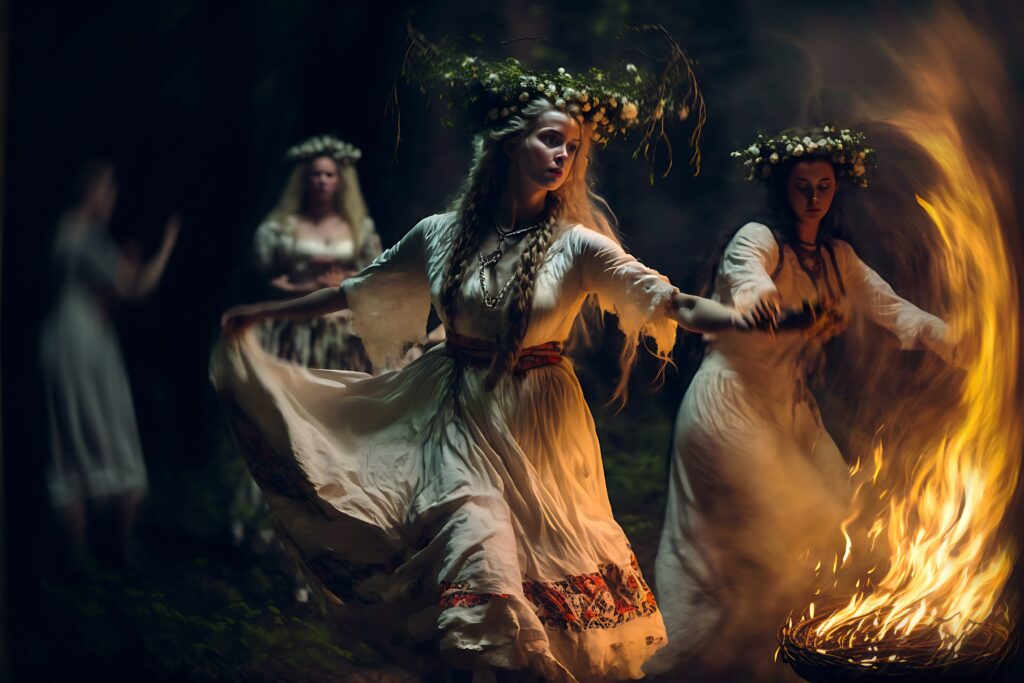
But that wasn’t always the case. In fact, for many ancient peoples around the globe, the summer and winter solstices, as well as celestial events like the spring and autumn equinoxes, solar eclipses and much more, served as the foundations for entire belief systems and cultures.
They didn’t have artificial light in the evenings, so the stars glowed and dazzled with galvanizing force during the black nights. They grew up enjoying deep intimacy with star, sun and moon activities; as they didn’t have televisions, phones, cars, electricity and nearly every other convenience and distraction that we have today, time to savor celestial goings on was comparatively expansive.
In England, Celtic priests 5,000 years ago built Stonehenge to honor the summer solstice. Nearly 600 years ago, the Pachacútec people who built Peru’s Machu Pichu’s revolved many of the structures around the Southern Hemisphere’s summer solstice, which takes place in late December (the reverse of Northern Hemisphere solstices). Romans, Greeks, Egyptians, Native Americans and Chinese, among many others, held festivals to celebrate the summer solstice.
The summer solstice today
Today, people do mark the solstice in different ways. Yoga studios from Maine to California often hold outdoor solstice yoga events. People have bonfires, and toss wishes scrawled on scraps of paper into the flames.
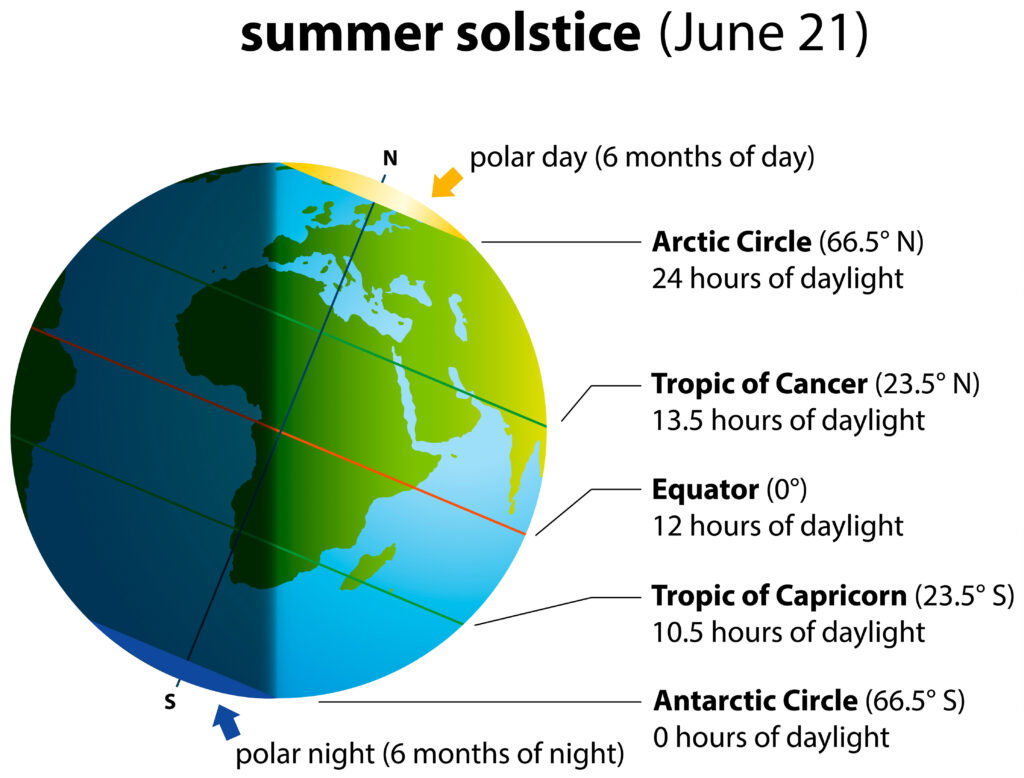
In China, the summer solstice is called (夏至), and people eat cold noodles (such as chilled sesame noodle dishes, and dandanmian). The tradition grew out of agriculture; wheat harvests take place around the time of the summer solstice, and wheat noodles serve as a happy nod to the seasonal arrival of such an important source of food and health.
One thing has remained constant during the solstices across the millennia, especially in places that are not near the equator (where daylight lengths do not vary much between winter and summer): humans are at their busiest. Those long days compel people just do, do, do. Take the post-prandial hike, rather than hunker down in bed with a book. Host the backyard party that might extend into the next day. Row that canoe toward the setting sun, well after 8 p.m.
Bolster summertime energy with tea
And drink tea! For these long days, the people out pushing swings, watching soccer practices, tending to gardens and sitting down for al fresco meals well into the evening need sustenance. And they don’t want the kind of energy that makes them jittery and interferes with sleep.
In addition, they’ll want liquid refreshment; the summer solstice takes place in the middle of the year’s hottest season. Hot tea helps keep things cool; it precipitates perspiration, which helps chill bodies. And iced tea satisfies the desire for gulps of frigid drinks when temperatures climb.
Happy summer solstice! We adore these long days, and champion the longest day of all—the solstice. To help boost you through the rest of the sunny summer, we offer three exquisite teas that are beautiful both hot and iced, provide gentle (rather than explosive) energy and taste magnificent.
Summer Solstice Tea: Summer Tranquility White
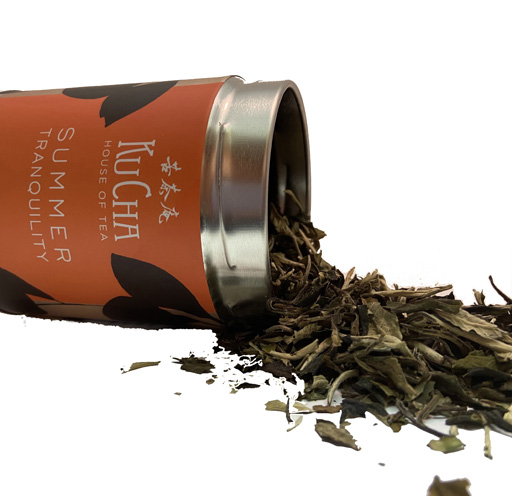
All traditional Camellia sinensis teas naturally contain caffeine. We think the stimulating botanical compound has been a great gift to the people of the world. But it’s also powerful; too much of it, and healthy get up and go turns into fractured thinking and lost sleep.
White tea, made from spring leaves and buds and not undergoing any oxidation, yields what we find to be especially reasonable caffeine quotients. Sip white tea and experience pleasing mental and physical liveliness, while escaping racing thoughts and shaking hands.
Our Summer Tranquility White is wonderful; we enjoy it so much that we brewed it for one of our ready-to-drink canned teas. Its backbone, Peony White tea (also known as Pai Mu Tan) from China’s Fujian Province, broadcasts a warm, rich sweetness, with floral aromas. To that we add peach and apricot, which together suggest peony perfume.
It’s a perfect candidate for both iced and hot. Our ready-to-drink version is meant to be enjoyed straight out of the refrigerator.
Summer Solstice Tea: Blueberry Lavender Bliss Black
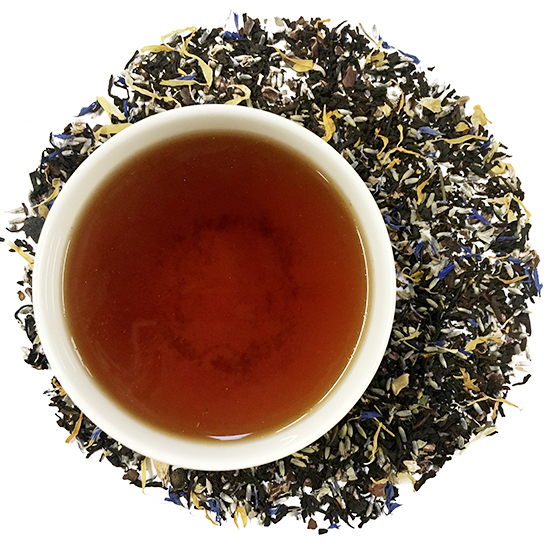
This Ku Cha favorite is built on black tea, which is the most robust of all styles of Camellia sinensis (white, green, oolong, pu-erh and black). But we temper black tea’s potentially stern hold on the blend with a parade of soothing caresses: blueberry, lavender, ginger, calendula, cornflower and cocoa nibs. The result? A true triumph of tea blending.
Hot or cold, first thing in the morning or after lunch, during a hike or beside a pool, Blueberry Lavender Bliss is always a joy-inducing partner. It’s also quite summery: the blueberry and flowers in the blend all thrive during the warm months.
Summer Solstice Tea: Ginger Refresh
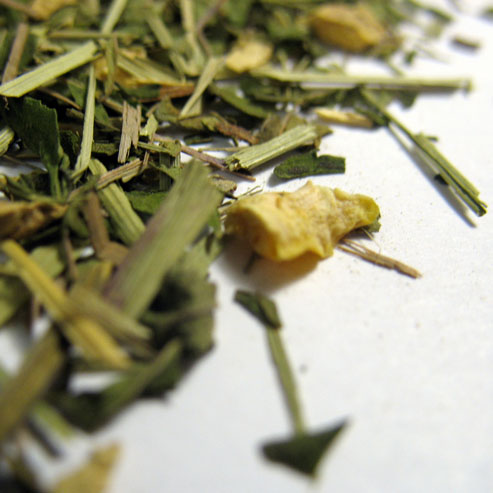
Many pick-me-ups contain caffeine or other natural stimulants that invigorate and arouse. But Ginger Refresh, a spectacular homage to the advantageous flavors and effects of tropical ginger root, enlivens without the stimulants.
Instead, it wakes up minds and provokes motion through bright flavors and powerful botanicals.
Practitioners of Traditional Chinese Medicine (TCM) often prescribe ginger to revive energy in people who have grown sluggish. The root’s distinct and potent flavors thrill—the word dull may never have been found adjacent to ginger—and it also improves digestion. To this bold flavor we added peppermint, licorice and lemon peel. Each of them could be described as a sort of edible (and enjoyable) thwack: the crack of peppermint, the jolt of licorice, the snap of lemon peel.
After a long June or July day of mountain fun, with dinner coming off the grill just as the setting sun turns the sky orange, pink and blue, we savor Ginger Refresh with particular enthusiasm. Sipping it gives us the little bit of zing we need to finish night with vigor, without disrupting our sleep. And as mentioned, it also nurtures healthy digestion.

